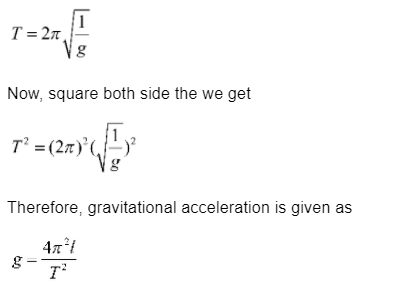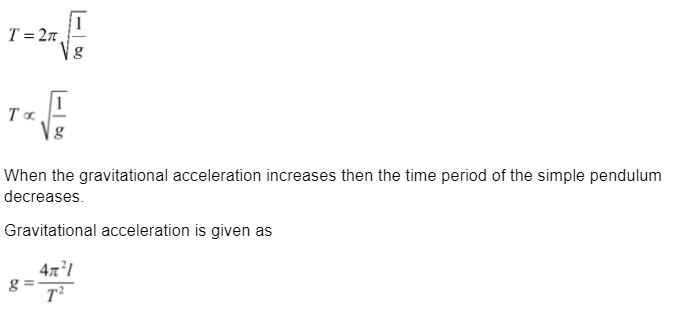A simple pendulum executes a simple harmonic motion (SHM), that is, its periodic movement is defined by an acceleration which is proportional to its displacement and directed toward the centre of the movement.
Simple Pendulum
Simple pendulum is a mechanical system of mass which is connected to a long massless inextensible string which executes oscillatory motion. In ancient days, a pendulum was used to track the time. Pendulum is also used to identify the beats.
The time period of the pendulum is constant even when the amplitude is changed but when the gravitational acceleration changes then the time period of the simple pendulum also changes. This property is used to determine the acceleration due to gravity. The time period depends on the length of string to which the Bob of the simple pendulum is connected.
Simple Harmonic Motion (SHM)
The motion of an object moving back and forth along a straight line about an intermediate (mean) position is called simple harmonic motion. A pendulum experiences a simple harmonic motion. It oscillates back and forth about its centre position where the string and bob move. These motions of the pendulum are called oscillations, which represents simple harmonic motion.
A simple harmonic motion can be defined as an oscillatory motion where the acceleration of the particle at any position is proportional to the displacement from the mean position. It is a special case of oscillating motion.
Equation of Simple Harmonic Motion
Let us consider a particle having mass ‘m’ exhibiting the Simple Harmonic Motion along the path X’OX and also consider the mean position of particle be O. Let the speed of particle is when the particle is at p position.

Types of Simple Harmonic Motion
There are two types of Simple Harmonic Motion (SHM) which are given below.
- Linear Simple Harmonic Motion
- Angular Simple Harmonic Motion
Linear Simple Harmonic Motion:
Linear simple harmonic motion is one of the simplest types of oscillatory motion, where a body, if displaced from its mean position, oscillates “back and forth” about the mean position and the restoring force is always towards its mean position and its magnitude is proportional to the displacement from mean position.
Angular Simple Harmonic Motion:
Angular acceleration which acts on the particle is always proportional to the angular displacement of the particle and direction is towards the equilibrium position.
Oscillatory Motion
When an object repeatedly moves across a point, then the object movement is an oscillating movement. In a complete vacuum, the ideal state can be achieved because there is no air to stop the object in the friction of the oscillating motion.
Effect of Gravity on Simple Pendulum:
We know, the time period is given as
Therefore, the time period of a simple pendulum is inversely proportional to the square root of gravitational acceleration.
Thus,
Hence, when the gravitational acceleration increases, then the time period of the simple pendulum decreases.
Determination of g using Simple Pendulum:
Gravitational acceleration is determined experimentally by using simple pendulum.
Time period (T) for a simple pendulum is not depend on mass or the elementary angular displacement, but only depends on the length (L) of string and the value of Gravitational acceleration.
As we know, time period is

Applications of Simple Pendulum
There are many applications of simple pendulums, some of which are given here.
- Simple pendulum is used in clocks because the time period of the pendulum is fixed, thus it is used to track the time.
- Pendulums are used to determine the gravitational acceleration.
Example of Simple Pendulum:
If the time period of a simple pendulum is 1.2 s and the value of gravitational acceleration is

Conclusion
Simple pendulum is a mechanical system of mass which is connected to a long massless inextensible string which executes oscillatory motion.
The motion of an object moving back and forth along a straight line about an intermediate (mean) position is called simple harmonic motion.
There are two types of Simple Harmonic Motion (SHM) which are given below.
- Linear Simple Harmonic Motion
- Angular Simple Harmonic Motion
Time period of a pendulum is given as

 Profile
Profile Settings
Settings Refer your friends
Refer your friends Sign out
Sign out








